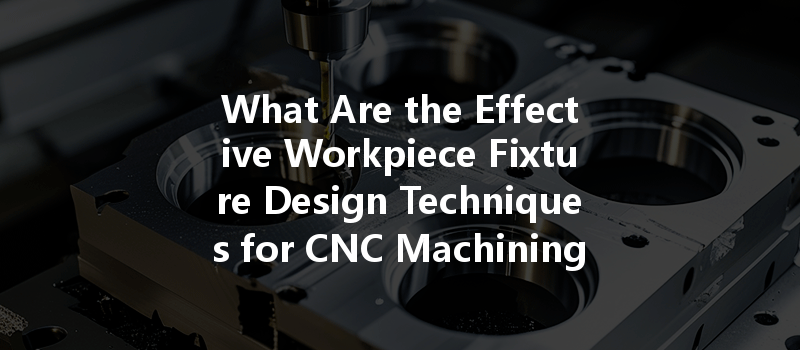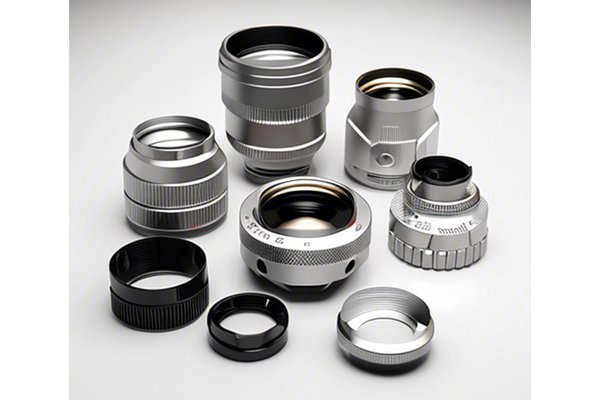Did you know that over 40% of machining inaccuracies stem from improper workpiece fixturing? This eye-opening statistic highlights the critical role that workpiece fixture design plays in the CNC machining process. Is your CNC project optimizing its fixture designs, or are you unintentionally inviting errors that could lead to significant quality issues and increased production costs?
In the competitive landscape of manufacturing, securing every possible advantage is vital, and understanding the nuances of workpiece fixture design techniques can catalyze substantial quality improvements. In this comprehensive blog, we’ll delve into various techniques for effective workpiece fixture design in CNC machining, offering detailed guidance and expert insights to enable designers and machinists to achieve optimal machining outcomes.
Chapter 1: The Importance of Workpiece Fixturing
Fixturing refers to the method of securing and supporting a workpiece during machining operations. The primary purpose of a fixture is to ensure the workpiece remains stable and correctly positioned, maintaining the desired relationship between the machine tool, cutting tool, and workpiece. Poor fixturing can result in:
Well-designed fixtures can mitigate these issues, leading to improved part accuracy, reduced processing time, and enhanced product quality.
Chapter 2: Key Considerations for Fixture Design
When embarking on workpiece fixture design, several critical factors need to be evaluated:
2.1 Material Selection
Choosing the right material for fixtures is essential. Common materials include:
2.2 Fixture Types
Different types of fixtures serve various machining processes, including:
2.3 Orientation and Accessibility
The orientation of the workpiece during machining is paramount. Ensure:
2.4 Tolerance Requirements
Adjust the fixture design according to the required tolerances of the final product. High-precision parts may demand tighter tolerances and more robust fixture systems.
Chapter 3: Advanced Fixture Design Techniques
3.1 CAD for Fixture Design
Utilizing Computer-Aided Design (CAD) software can significantly enhance fixture design through:
3.2 Modular Fixturing Systems
Modular fixtures utilize interchangeable components that allow for customization depending on the part being machined. These systems can help reduce costs and lead times by simplifying the design and setup of multiple workpieces.

3.3 Automated Fixturing Solutions
Integrating automation into fixturing allows for improved efficiency and precision. Robotic fixtures can adapt to different parts dynamically, further enhancing assembly lines and reducing human error during setup.
3.4 Quick Change Fixtures
Implementing quick-change fixtures can minimize downtime. These fixtures facilitate ease of switching between different setups and components, especially in high-mix low-volume production environments.
Chapter 4: Practical Steps for Effective Fixture Design
4.1 Analyze the Workpiece
Begin with an in-depth analysis of the workpiece, noting:
4.2 Create a Fixture Plan
Outline a fixture plan that includes:
4.3 Prototype and Test
It’s important to develop prototypes of your fixture designs. Use 3D printing or CNC milling to create test fixtures that will be evaluated for performance, precision, and ease of use.
4.4 Iterate and Improve
After testing, gather feedback and look for areas to improve. Adjust the design as necessary to ensure optimal performance during actual machining processes.
Chapter 5: Common Challenges in Fixture Design and Solutions
While designing workpiece fixtures may seem straightforward, several challenges can arise, including:
5.1 Vibration and Stability Issues
Solution: Utilize damping materials and ensure proper weight distribution in the fixture design to minimize vibrations during machining.
5.2 Poor Repeatability
Solution: Implement robust locators and clamps that maintain consistent orientation and pressure, ensuring repeatable setups.
5.3 Inadequate Cooling
Solution: Design fixtures with channels or features that can direct coolant effectively to the cutting tool, maintaining optimal operating temperatures.
Chapter 6: Case Studies
6.1 Case Study 1: Aerospace Component Fixture Design
An aerospace supplier faced challenges with part inaccuracies due to a combination of geometrical complexity and material stability. A dedicated fixture was developed utilizing modular components that allowed for stable clamping without exerting undue stress on the workpiece. This resulted in a remarkable 25% improvement in machining accuracy.
6.2 Case Study 2: Automotive Part Production
An automotive manufacturer struggled with cycle times due to extensive manual adjustments. By implementing quick-change fixture technology, the company reduced setup times by 40%, allowing for increased production efficiency.
In conclusion, effective workpiece fixture design techniques are critical for successfully navigating the challenges associated with CNC machining. Through careful consideration of materials, fixture types, design methodologies, and advanced solutions, machining operations can significantly enhance accuracy, reduce costs, and improve production times.
Emphasizing the importance of these techniques is essential for businesses striving for competitive advantages in their respective markets. Remember, optimizing your machined parts starts with a well-thought-out fixture design. By implementing the insights shared in this blog, you not only mitigate risks but also promote continuous improvement within your operations.
Thank you for journeying through these insights into workpiece fixture design techniques. We hope this blog empowers you to rethink your CNC machining strategies and inspires a future of precision and innovation in your projects!






